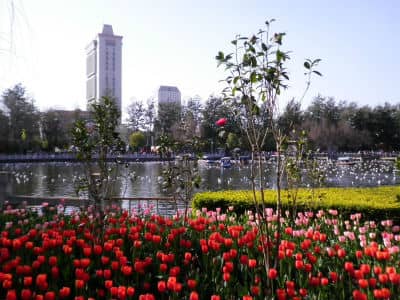
Major Places of Interest in Yunnan
Kunming

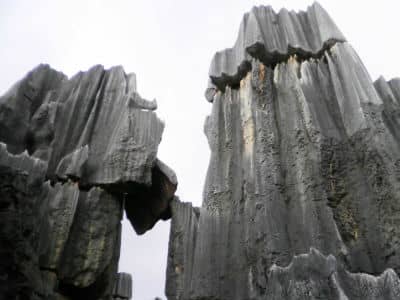
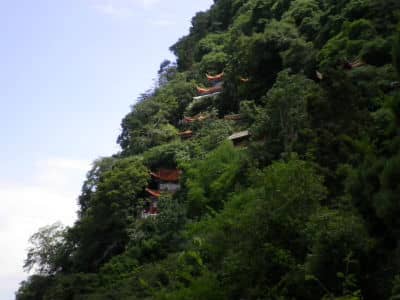
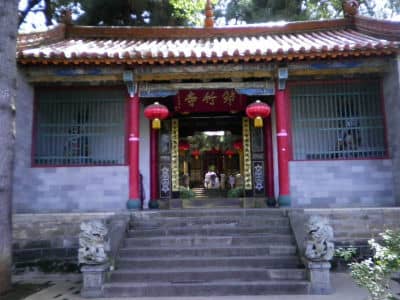
(Altitude: 1890 meters) Being capital, the political, economical, cultural, scientific and technological center of Yunnan, Kunming has a history of more than 2400 years and it was the gateway to the Silk Road that promoted trade with Tibet, Sichuan, Myanmar and India. The city is one of China's best tourist destinations. Kunming is known as a city of "Eternal Spring" without cold winter and hot summer. Its average temperature is 9ºC in winter and 23ºC in summer and annual average temperature is 15.1ºC. With the karst landform, exotic ethnic minorities, rich culture, Kunming is attracting more and more visitors from home and abroad!
Main Scenic SpotsStone Forest: A world natural heritage site and world geological park with numerous stone peaks, pillars, and stalagmites stemming from underground and towering into the sky, looking like a vast forest of stone, hence the name - "Stone Forest".
Western Hills: A forest park which is nicknamed "Sleeping Beauty" as the outline of the hills looks like a lady lying down and trailing her hair in Dianchi Lake. Ascending the hills, you can have a bird's eye view of Kunming city and the lake. The park is also a destination for hiking and trekking, a place to be amazed at with the temples and grottos chiselled from the cliff.
Bamboo Temple: A Buddhist temple famous for the 500 life-sized clay statues of arhats.
Dianchi Lake: A lake which lies to the south of Kunming city and it has an area of 370 square kilometers, depth of 44 meters and altitude of 1,885 meters. The lake is the eighth largest in China and the largest in Yunnan Province and for its exceptional charms, it is nicknamed "Pearl" on Plateau.
Golden Temple: A Taoist temple which is celebrated for the heaviest bronze temple in China with weight of 250 tons and a 14-ton bell which is the third heaviest one in China. Its bell tower offers an excellent viewpoint to overlook Kunming city and see "Sleeping Beauty" clearly in the distance.
Other Attractions: Yunnan Nationality Village, Yunnan Ethnic Minority Museum, Daguan (Grand View) Park, Green Lake Park, Tanhua Temple, Golden Horse and Jade Rooster Archways, East and West Temple Pagodas, Flower & Bird Market, World Horti-Culture Exposition Garden, Black Dragon Pool, Jiuxiang Karst Cave, Red Earth in Dongchuan, Jiaozi Snow Mountain etc.
Dali
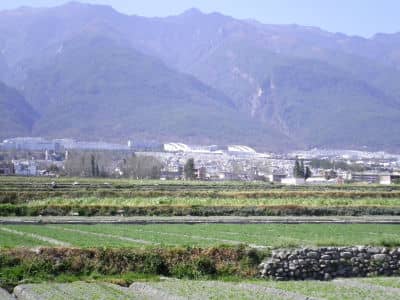
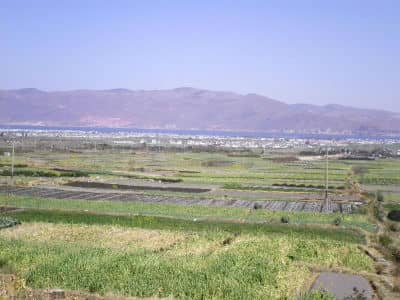

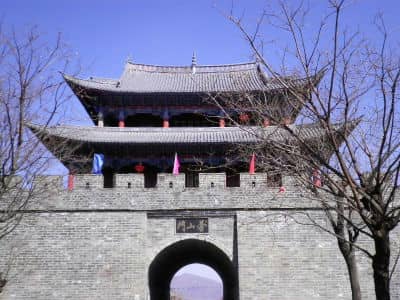
(Altitude: 1970 meters) Located in west Yunnan, Dali is 400 kilometers away from Kunming and it was once the capital of Nanzhao State, the political, cultural and economical center of Yunnan in ancient history. Dali boasts of one of the country's seven freshwater lakes-Erhai Lake and 19 mountain peaks and 18 streams.
Major Tourist AttractionsThree-Pagoda Temple: A Buddhist temple which is also known as Chongshengsi Temple and it is renowned for the majestic three pagodas which were built between 823 and 1108. Its main pagoda has 16-stories with close eaves and hollow inside and it stands 69.13 meters high, the other two octagonal flanking pagodas, one in the south and the other in the north, both of which are ten-story, each rising 42.19 meters high. The temple was the Buddhist center of Nanzhao State.
Old Town of Dali: An old town which is located at 13 kilometer south of new town-Xiaguan of Dali, at the foot of Cangshan Mountains in the west and it overlooks Erhai Lake in the east. The town was built in 1382 A.D. as the capital of the Dali State. The original city wall was 8 meters high and 6 kilometers long with four gates and towers in the east, the west, the south and the north. Presently, only the southern and northern gates remain. The layout of the town resembles a chessboard. Inside the town, there are typical houses of the Bai ethnic minority, the brooks from the Cangshan Mountain flow through the streets and lanes then finally into Erhai Lake and there are many historical relics and places of interest. The famous "Foreigners' Street" boasts of many tea houses, antique shops, Chinese and Western restaurants.
Erhai Lake & Cangshan Mountains: Erhai Lake is a highland freshwater lake which is 40 kilometers in length and 7 to 8 kilometers in width. With crystal clear waters and isles, a boat ride is worth your while; Cangshan Mountains is a mountain range which has 19 peaks extending 50 kilometers from the north to the south with 18 streams running into Erhai Lake. The mountains are known for the four spectacular views: "Clouds, Snow, Peaks and Streams".
Chicken Foot Mountain: A mountain which is 90 kilometers away from the new town of Dali and it is one of the five famous Buddhist mountains in China with a complex of temples remain there. The three peaks in the front and the ridge at the back resemble a chicken foot, hence the name - "Chicken Foot Mountain". From the second floor of the Lengyan Tower on the top of the hills, Cangshan Mountains, the three pagodas and Erhai Lake can be seen standing face to face to the west and the snowy Yulong Mountain of Lijiang to the north is visible too.
Other Attractions: "Tian Long Ba Bu" ("Demi-Gods and Semi-Devils") Film City, Butterfly Spring, Old Town of Shaxi, Shibaoshan Mountain, Weibaoshan Mountain etc.
Lijiang
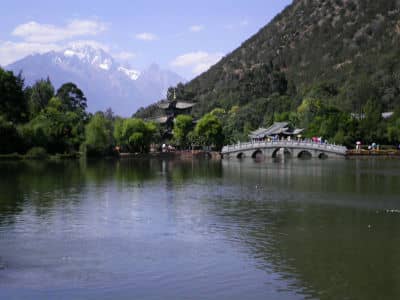
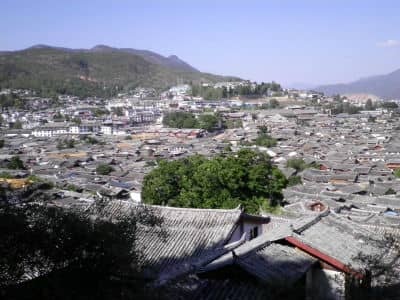

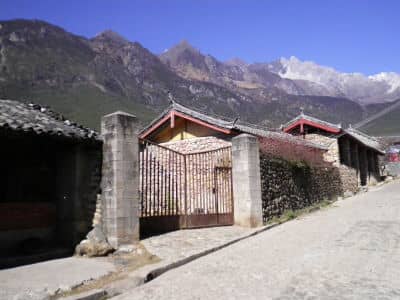
(Altitude: 2410 meters) Situated 200 kilometers to northwest of Dali, Lijiang is celebrated for its rich local Naxi ethnic minority culture, magnificent snowy mountains and picturesque sceneries.
Major Tourist AttractionsThe Old Town of Lijiang: An old town which is one of the world cultural heritage sites and it covers an area of 3.8 square kilometers. The town is surrounded by tree-covered mountains on all sides with crystal clear water running in the middle of it and it was built in the middle of a flatland at the foot of the Yulong Snow Mountain. As the layout of the town resembles a big jade ink slab, hence the name - "Dayan Zheng" (the Town of Big Ink Slab).
Black Dragon Pool: A park which is situated just at the foot of Elephant Hill with the reflection of Yulong Snow Mountain in the pool. Structures include the One-cent Pavilion, Moon-Embracing Hall, Five-Phoenix Hall and the Five-Arch Bridge are found here. Along the side of Elephant Hill, there are also a number of springs that flows out of the Pool. To the south of the pool is a small waterfall where the water also flows into the old town of Lijiang.
Yulong (Jade Dragon) Snow Mountain: A snow-capped mountain with the highest point of 5596 meters. Above the height of 4500 meters on the mountain, you can find 19 marine glaciers extending to a width of 30 meters and approximately 100 meters in length. There are cable cars that will bring you to a height of 4506 meters above sea level. Looking from afar, the mountain range resembles a jade dragon, hence the name - "Jade Dragon Snow Mountain".
First Bend of Yangtze River: A sharp turn of Yangtze River from the south to the north which formes part of a spectacular view.
Tiger Leaping Gorge: A gorge which lies between Jade Dragon Snow Mountain and Haba Snow Mountain and it is about 55 kilometers north of Lijiang. A tiger was said to leap across the gorge with the help of a large rock in the middle of the rapid river, hence the name - "Tiger Leaping Gorge". The gorge is divided into upper, middle and lower sections with length of about 30 kilometers. The narrowest part of the gorge is only 30 meters wide and the deepest is more than 3000 meters which is believed to be the world's deepest.
Lugu Lake: A lake which is one of the deepest in China with the deepest point of 93.5 meters. The lake is 200 kilometers away from Lijiang and it is home to the Musuo people, a subgroup of the Naxi ethnic minority who retain the vestiges of a matriarchal society whom are also known for their exotic marriage customs.
Shangri-La
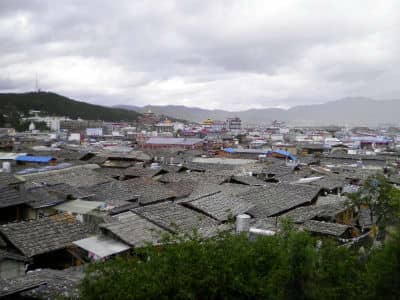

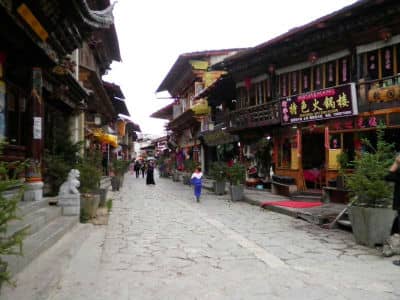
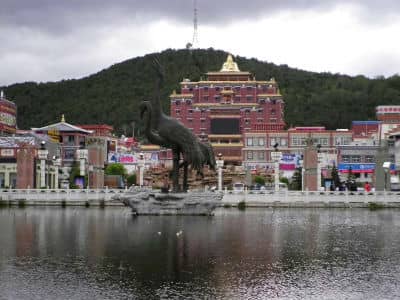
(Altitude: 3280 meters) Lies 190 kilometers further northwest to Lijiang, Shangri-La is a Tibetan inhabited region, In 1939, the British novelist James Hilton wrote a book named "Lost Horizon", in which he described a paradise-like and peaceful land and he named it Shangri-La. According to the historical record, in 1944 there was indeed an American transport plane which crashed in the town of Zhongdian in Yunnan while flying over the Sino-Indian air route. After a careful investigation into these events, it was determined that the beautiful "Shangri-La" described in "Lost Horizon" is, in fact, the county of Zhongdian.
Main Scenic SpotsBitahai Lake: A plateau lake which stands at an elevation of 3539 meters and it is 25 kilometers away from the town. There are big trees that cast shadows on the lake and it reflects a charming landscape which varies in four seasons. It is most fascinating when intoxicated fish floating in the lake after they eat azalea petals.
Napahai Lake: A seasonal lake which lies on the northwestern grassland of 8 kilometers away from the town. Whenever autumn comes, birds will come and they would fly over and stay around the tents of herdsmen casually.
Gandansongzanlin Monastery: A Tibetan Buddhist temple which is 3 kilometers away from town and it was built in Ming Dynasty as one of the 13 big Lamaist temples in the region. The monastery is composed of well-arranged flat-roof houses row on row from the foot to the top of the hill, like a neatly set-up castle.
Xishuangbanna
(Altitude: 500 meters) Located in the subtropical zone of south Yunnan, Xishuangbanna has a mild and humid climate. The boundless primeval forests and countless rare and precious animal varieties make Xishuangbanna a unique place in the country!
Places of InterestWild Elephant Valley: A nature reserve for tropical primeval rainforests and wildlife. In the jungles here live about 70 wild Asian elephants. Wild elephants usually come out at night, so people built a small hotel on tops of trees in forest for tourists who want to observe wild elephants closely.
Manfeilong White Stupas: A group of stupas which are located at Manfeilong Village of 67 kilometers away from Jinghong city and they were built in 1204. The stupas are very famous in southeast Asia and there is a huge footprint in its niche there which was said to be left by Buddha and it is very sacred to Buddhists.
Ganlanba: An area lying by Mekong River where you can see the most typical Dai villages and picturesque countryside views.
Tropical Botanical Garden: A garden which is located on Gourd Island of Menglun township, 96 kilometers from Jinghong city and it covers an area of around 900 hectares. More than 3000 kinds of tropical and subtropical plants from home and abroad grow there.
Octagonal Pavilion: An architecture displaying craftsmanship of Dai people, 80 kilometers away from Jinghong and it served as a meeting room for senior monks.
Mekong River: A river which is 1187.5 kilometers long in Xishuangbanna and its upper reach is 135 kilometers long from Jinghong to Tiger Leaping Gorge and the lower reach is 40 kilometers in length from Jinghong to Ganlanba.
Jianshui
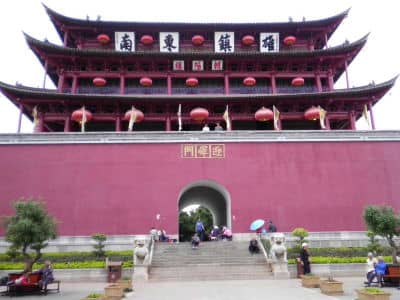
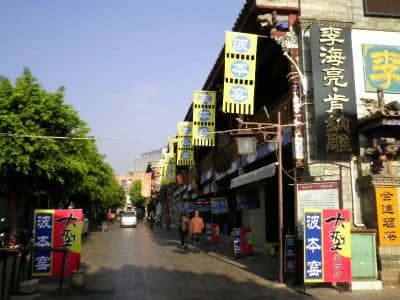
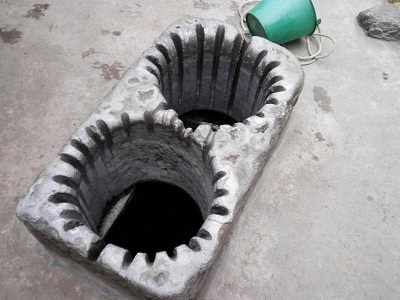
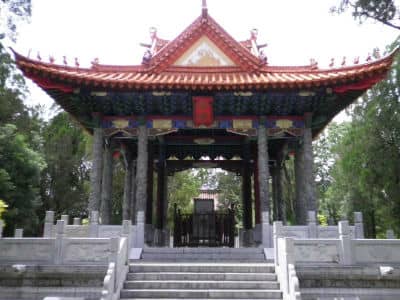
(Altitude: 1300 meters) Located in south Yunnan and 220 kilometers away from Kunming, Jianshui is renowned for its old architectures like the city gate, Zhu's Family Garden, Twin Dragons Bridge, Confucian Temple, Zhang's Family Garden in Tuanshan Village and natural wonders like Swift Cave etc and it is also one of the earliest developed cities in south Yunnan that enjoys the fame of being an ancient cultural city and important gateway. Since Yuan dynasty, Jianshui was the political, cultural and communication center of south Yunnan.
Yuanyang
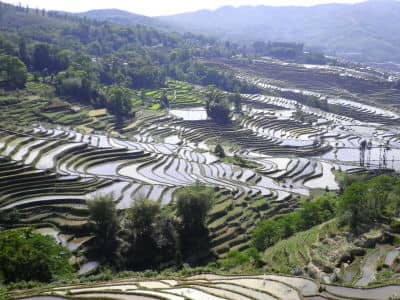

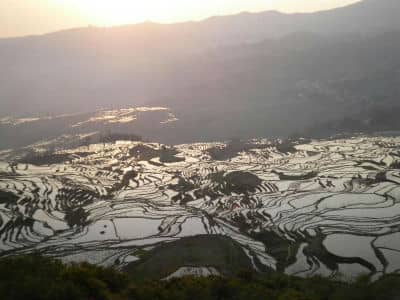
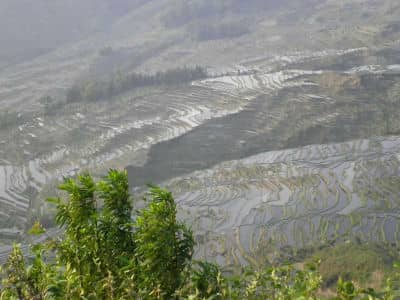
(Altitude: between 150-1650 meters) Located 90 kilometers to southeast of Jianshui, Yuanyang is one of the best places to view the terraced fields which extends kilometers from mountain top to valley bottom and it is also an ideal place to experience local ethnic minorities'lives. The scenic area is made up of Qingkou Hani Nationality Village, Quanfuzhuang Terraced Fields, Bada Terraced Fields, Sheng Village Terraced Fields, Duoyishu Terraced Fields and Tiger Mouth Terraced Fields etc.
Luoping
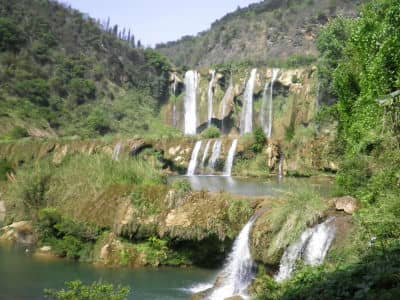
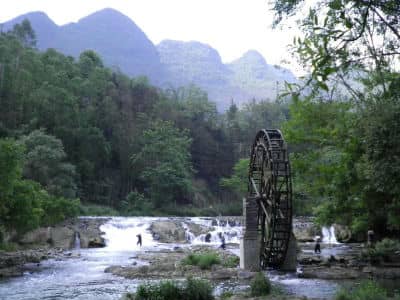
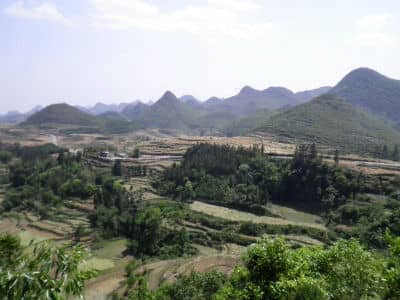
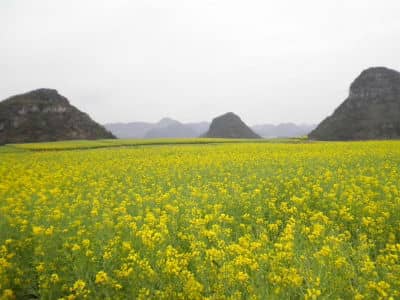
(Altitude: between 722-2468 meters) Located in east Yunnan and 229 kilometers away from Kunming, Luoping is famous for its annual rape flower festival with a world of rape flowers in full bloom in early spring. The area is made up of three parts: Jiulong (Nine Dragons) Waterfalls, Duoyi River and Three Gorges of Lubuge.
Puzhehei
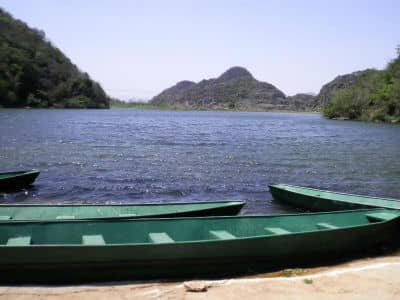
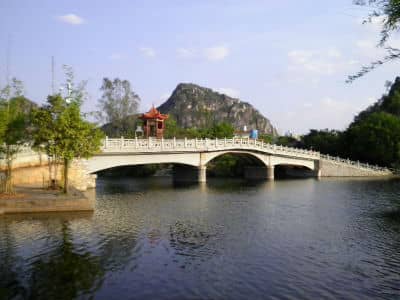
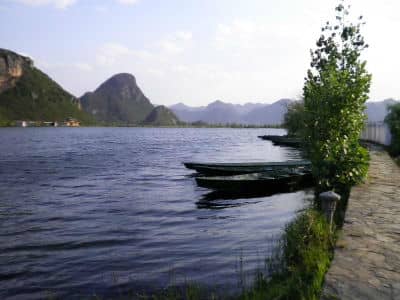
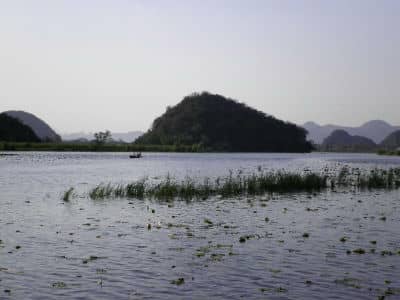
(Altitude: 1400 meters) Located in southeast Yunnan and 286 kilometers away from Kunming, Puzhehei is typical karst landform which covers a total land of 165 square kilometers. The scenic area is a perfect combination presenting a picture of peaks in the water, caves in the peaks, brooks in the caves and villages scattering around. Cruising along Puzhehei's 21 kilometers of aquatic tourist route connecting 54 lakes, you can see more than 300 peaks, large expanse of lotus, 83 caves. In summer, it is even nicer with the lotus in bloom!
Tengchong
(Altitude: 1600 meters) Located in western border of Yunnan and 700 kilometers away from Kunming, Tengchong is composed of hot springs and clusters of extinct volcanoes as well as beautiful natural sceneries and places of historical and cultural interest.
Ruili
(Altitude: 760 meters) Located in southwestern border of Yunnan and 839 kilometers away from Kunming, Ruili is a beautiful land covered by green subtropical rainforests and dotted with big Banyan trees, each one looking like a forest. Hinayana Buddhist stupas can be seen everywhere around the area. Ruili is also a center of border trade between Laos and Burma.
Liuku
(Altitude: 900 meters) Located in northwestern tip of Yunnan and 580 kilometers away from Kunming, Liuku is the capital of Nujiang prefecture and it is a destination under further exploration, yet Liuku offers breathtaking views with the Great Canyon of Nujiang River extending 600 kilometers in Yunnan only! What's more, the average depth of the River is more than 2000 meters!
